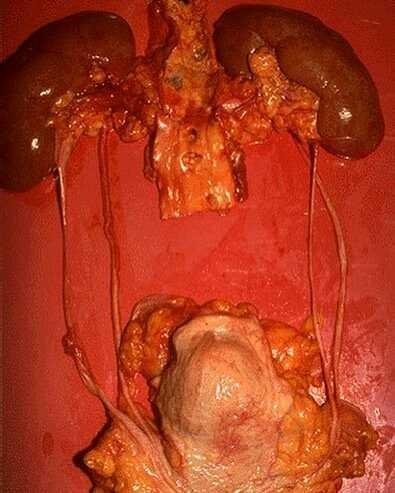
Duplicated ureters are seen exiting from each kidney and extending to the bladder that has been opened. A small segment of aorta is seen between the normal, smooth-surfaced kidneys. A partial or complete duplication of one or both ureters occurs in about 1 in 150 persons.
Incomplete ureteral duplication, in which one common ureter enters the bladder, is rarely clinically significant. Alternatively, complete ureteral duplication, in which two ureters ipsilaterally enter the bladder, has a propensity for vesicoureteral reflux, which is the retrograde flow of urine from the bladder into the ureter, which subsequently increases the risk of urinary tract infections.
As a result, there is a potential for obstructive problems due to the abnormal flow of urine and the entrance of two ureters into the bladder in close proximity, but most of the time this is an incidental finding (except to a urologist).